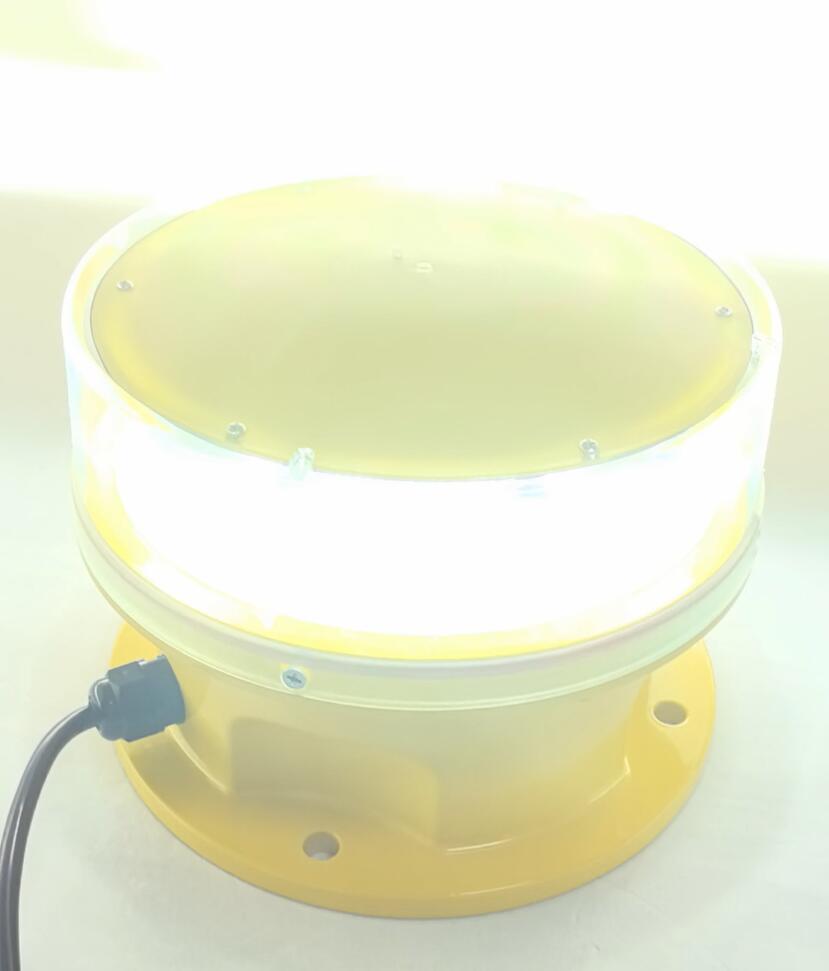Illuminating Safety: The Role of Obstruction Lights in Airports
Obstruction lights in airports play an indispensable role in maintaining aviation safety by marking potential hazards for aircraft. From control towers to terminal buildings and surrounding infrastructure, these lights ensure that pilots have clear visual cues to navigate safely, particularly during low visibility conditions or at night. Their critical role makes them a cornerstone of airport operations and design.
What Are Obstruction Lights in Airports ?
Obstruction lights are specialized lighting systems installed on structures that could pose a risk to aircraft within an airport’s vicinity. These lights help pilots identify obstacles and navigate safely, reducing the risk of collisions. Designed to meet stringent regulatory standards, obstruction lights are typically classified by color, intensity, and operational modes to serve specific safety needs.
Types of Obstruction Lights Used in Airports
Low-Intensity Lights:
Used for structures of minimal height, such as ground-based installations near runways.
Emit steady red light visible at short distances.
Medium-Intensity Lights:
Installed on taller structures like control towers or antenna masts.
Emit flashing red or white lights, ensuring visibility from greater distances.
High-Intensity Lights:
Reserved for extremely tall structures or those located in critical approach or departure paths.
Use flashing white strobes, visible during both day and night, to maximize pilot awareness.
Regulations Governing Obstruction Lights in Airports
Regulatory bodies like the Federal Aviation Administration (FAA) and International Civil Aviation Organization (ICAO) mandate the use of obstruction lights in airports. These regulations specify:
Placement: Obstruction lights must be installed on all structures exceeding defined height thresholds or within navigable airspace.

Color and Intensity: Guidelines dictate the appropriate lighting type based on structure height and proximity to flight paths.
| Obstruction Lights in Airports | Obstruction Lights in Airport |
Operational Standards: Lights must function continuously, with backup systems in place to ensure reliability.
Compliance with these regulations is non-negotiable, as failure to adhere can jeopardize airport operations and safety.
Importance of Obstruction Lights in Airports
Enhancing Pilot Awareness:
Obstruction lights provide clear visual markers that help pilots identify potential hazards, especially during takeoff, landing, or taxiing.
Preventing Accidents:
By marking obstacles, these lights significantly reduce the risk of aircraft colliding with airport structures.
Supporting Nighttime and Adverse Weather Operations:
Obstruction lights ensure safety during low visibility conditions, enabling airports to maintain operations around the clock.
Compliance and Liability Mitigation:
Proper installation and maintenance of obstruction lights protect airports from regulatory penalties and liability issues in the event of incidents.
Advances in Obstruction Lighting Technology
LED Lighting:
Modern obstruction lights use energy-efficient LEDs, offering longer lifespan and reduced maintenance costs.
Provide consistent brightness and reliability, crucial for safety-critical applications.
Smart Monitoring Systems:
Advanced systems allow remote monitoring of obstruction lights, enabling operators to detect and address issues proactively.
Integration with airport control systems ensures seamless oversight.
Solar-Powered Solutions:
Solar obstruction lights are increasingly used in airports to reduce energy consumption and environmental impact.
Ideal for remote or off-grid installations.
Environmental Considerations
While essential for safety, obstruction lights in airports can contribute to light pollution. Mitigation strategies include:
Shielded Designs: Reduce light spill and minimize impact on surrounding communities.
Adaptive Lighting: Adjust brightness based on ambient light conditions to limit unnecessary illumination.
Wildlife-Friendly Approaches: Use lighting wavelengths less disruptive to local fauna.
Maintenance Best Practices for Obstruction Lights
Ensuring the functionality of obstruction lights is vital for airport safety. Key maintenance practices include:
Regular Inspections:
Periodic checks for physical damage, dirt accumulation, or electrical faults.
Proactive Repairs:
Prompt replacement of malfunctioning lights or components to maintain compliance and safety.
System Testing:
Routine operational testing, including backup power systems, to ensure uninterrupted performance.
The Future of Obstruction Lights in Airports
The future of obstruction lights in airports is shaped by ongoing innovations:
Integration with Smart Airports: Advanced lighting systems integrated with airport management platforms will provide real-time data and predictive maintenance capabilities.
Eco-Friendly Materials: Sustainable designs will reduce environmental footprints while maintaining performance.
AI-Driven Insights: Artificial intelligence will enhance monitoring and efficiency, ensuring optimal safety standards.
Obstruction lights in airports are a critical safety feature, guiding pilots and safeguarding operations. As technology evolves, these lights are becoming more efficient, reliable, and environmentally conscious. By adhering to regulatory standards and embracing innovation, airports can ensure the continued safety and efficiency of their operations while minimizing their ecological impact.
